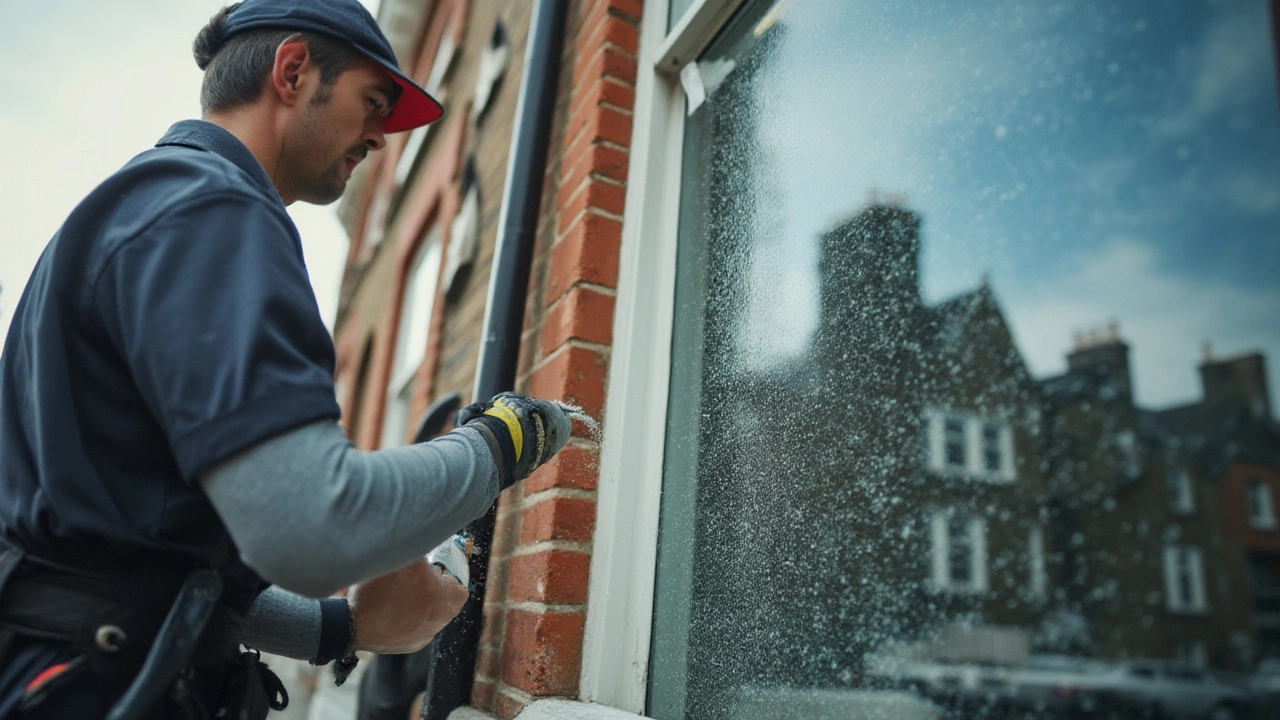Eco‑Friendly Window Cleaning Made Simple
Want crystal‑clear windows without dumping chemicals down the drain? You can get sparkling glass using items you probably already have at home. The trick is to choose the right mix, the right cloth, and a method that leaves no streaks.
Choose a Green Cleaning Solution
The easiest DIY cleaner is a 1:1 blend of distilled water and white vinegar. Vinegar cuts grime, dissolves mineral buildup, and evaporates fast, which means fewer streaks. If the smell bothers you, add a few drops of your favorite essential oil – lemon or lavender works well and adds a fresh scent.
For tougher outdoor grime, mix 2 cups of warm water, ½ cup white vinegar, and a teaspoon of mild dish soap (like Dawn). The soap helps lift dirt while the vinegar keeps the mixture eco‑friendly. Never use bleach or ammonia on windows; they’re harsh on glass and bad for the environment.
Pick the Right Tools
A microfiber cloth is your best friend. It traps dust, grabs water, and leaves a lint‑free finish. Keep two separate cloths – one for the cleaning solution and one dry for polishing. If you prefer a squeegee, choose a rubber‑edge model and wipe the blade after each pass to avoid streaks.
For high windows, a telescoping pole with a microfiber pad saves you from climbing ladders. Just attach the pad, dip it in your solution, and work from top to bottom. The pole lets you reach the whole pane without leaning, keeping you safe and the glass spotless.
Now that you have the mix and tools, here’s a step‑by‑step routine that works for any size window:
1. Remove loose dust with a dry microfiber cloth.
2. Spray the vinegar solution onto the cloth (not directly on the glass) to avoid drips.
3. Wipe the pane in a circular motion, covering the entire surface.
4. Use a clean, dry microfiber cloth or a squeegee to polish – pull the squeegee from top to bottom, wiping the blade after each pass.
5. Check for streaks from different angles; a quick swipe with a dry cloth fixes any leftovers.
For balcony or patio doors, repeat the process on both sides. If you notice water spots after rain, a quick wipe with a dry microfiber cloth will keep them at bay.
Want an extra boost of shine? Add a teaspoon of rubbing alcohol to your vinegar mix. It speeds up evaporation, reducing streaks even further. Just remember to keep the bottle tightly sealed to prevent the alcohol from evaporating.
Eco‑friendly window cleaning isn’t just about the solution; it’s also about timing. Choose a cloudy day or clean early in the morning. Direct sunlight makes the solution dry too fast, leaving marks.
By swapping out store‑bought cleaners for these simple, green alternatives, you’ll save money, protect the planet, and enjoy crystal‑clear views every time you look outside.

What Do Professional Window Cleaners Use in Their Water? Expert Window Cleaning Solutions Explained
Want shiny, streak-free windows like the pros? Discover exactly what professional window cleaners put in their water—and why it works so well.
Read More